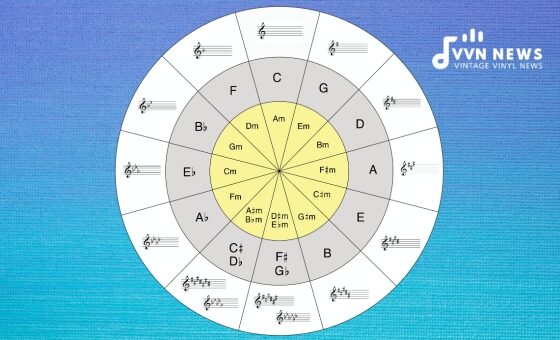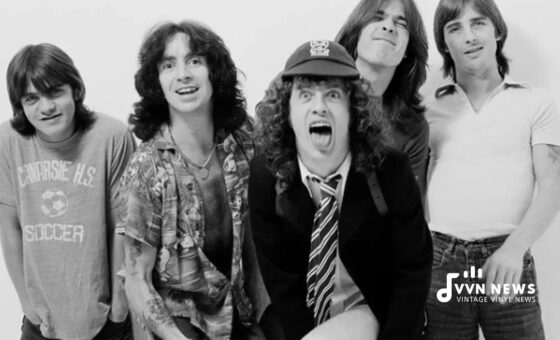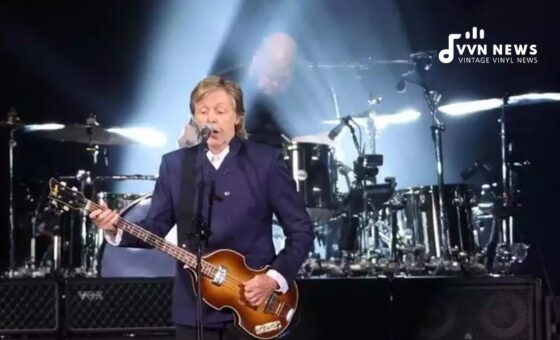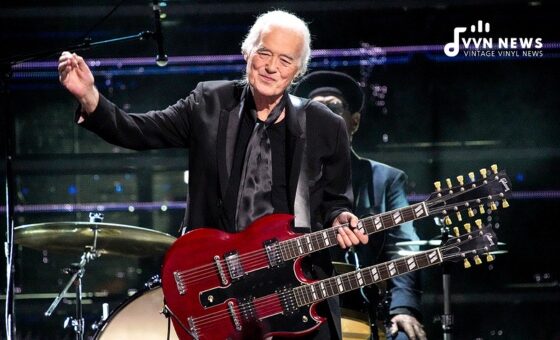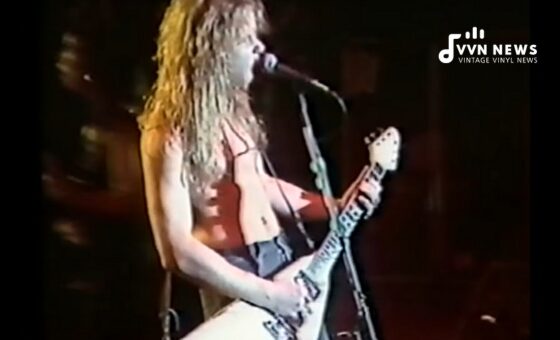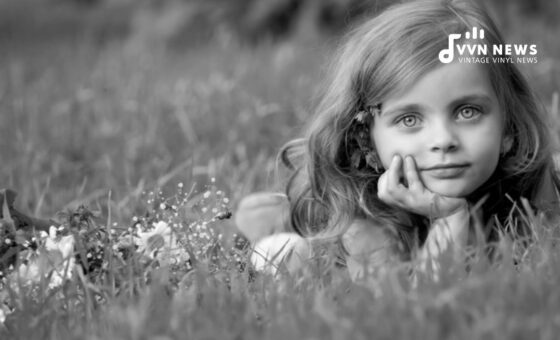Dubstep music; an eclectic fusion of electronic sounds and heavy bass lines that captures the essence of music’s expansive spectrum.
What started as an underground movement in London, quickly expanded as it crossed the Atlantic to take a firm hold on American listeners.
Yet, what many fail to realize is that dubstep is not a straightforward genre, it’s an inclusive realm with various distinct categories.
In this exploration, we’ll journey through the 20 sub-genres of dubstep that contribute to its rich diversity.
Admittedly, the initial encounter with dubstep can be slightly overwhelming for some – blending elements from different genres like drum and bass, reggae and even borrowing from the realms of hip-hop and metal.
But once you start distinguishing between its sub-genres – the spotlight shifts and you appreciate each composition for its individuality.
Whether you’re a hardcore electronic music aficionado or newly dipping your toes into this immersive musical landscape, understanding these 20 sub-genres not only educates but enriches your overall listening experience.
So sit back as we unravel the multifaceted world of dubstep music in this informative write-up.
What is Dubstep?
Believe it or not, Dubstep was born out of the dark, smoky basements of South London in the late 90s.
A musical genus that emerged as an offshoot from Garage Music, another UK fringe genre, which ultimately found its way to fame and influence around the turn of the millennium.
Characterized by its rich bass lines designed to vibrate your soul and rattle your bones, prematurely labeled as “too underground” or “dark”, Dubstep music was initially met with skepticism and reluctance.
However, it wasn’t long before music lovers started grasping its low-frequency focus combined with powerful rhythmic patterns.
Today, Dubstep incorporates a wide array of sounds and styles ranging from melodic harmonies to metallic clangs and sporadic beats, made possible through electronic synthesisers and software.
Its global recognition has carved out a space for those in search of a deeper musical adventure beyond radio-friendly pop tunes, proving that Dubstep is here to stay!
List of 20 Sub-Genres Of Dubstep

Due to the flexible nature of its structure and elements, dubstep music effortlessly lends itself to constant evolution and diversification.
This adaptability is what gave birth to its diverse sub-genres, each with its unique signature style.
Ganjastep
Hailing from the west coast of America, Ganjastep is a unique blend of traditional dubstep and reggae sounds, hence the “ganja” in the name.
It’s characterized by catchy melodies, lower tempo rhythms (typically between 70 and 100 BPM), and often features samples related to marijuana culture.
Being more about the vibes, Ganjastep mood can range from chill to lively, depending on the artist’s vision.
A notable figure in this sub genre would be Ganja White Night, continually pushing the boundary for creativity.
Substep
Substep could be seen as one of dubstep’s most introspective sub-genres. It focuses on offering an atmospheric and minimalist approach to sonic compositions.
Often having less focus on complex drum patterns but featuring heavier emphasis on deeper bass frequencies and eerie ambient sounds, you might find yourself ‘sinking’ into these tracks – the term ‘Substep’.
Artists like Author exemplify this style with expertly produced tracks that invite listeners for a deep dive into their art.
Also Read: 13 Music Genres That Should Disappear
Robostep
Capitalizing on the wild energy of dubstep, Robostep borrows from its predecessor’s aggressive nature but takes it one step further by integrating metallic and artificial robotic-like elements to create an electrifying sound palette while keeping its rhythm structures intact.
Signature sounds include industrial clangs, futuristic synthesisers and high-energy arrangements that feel straight out of a sci-fi movie. The name Noisia resonates heavily within this sub-genre.
Drumstep
The union of Drum & Bass’ fast tempos with Dubstep’s low-end pressure birthed Drumstep incorporating kick-snare drum patterns akin to those in drum and bass while mimicking dubstep’s innovative bass sound design elements with undertones oscillating usually between 160-180BPM.
When things get too slow in the world of Dubstep, artists like Figure take it upon themselves to enhance its pace with Drum-centric compositions.
Neurostep
Just like Neurofunk in DnB (Drum & Bass), Neurostep is all about experimental neurotic sounds filled with complex structures intricate design drips in every beat.
With swirling basslines that seem almost sentient due to their ever-changing nature; hauntingly intricate upper synth lines; it’s akin to consciousness infiltrating your auditory cortex ‘Neuro’.
Billain has been credited as a pioneer in establishing this niche within Dubstep.
Deathstep
Deathstep exists at a terrifying intersection of Dub-step & Death Metal music focusing heavily on dark thematic elements coupled with extreme distortions bearing resemblances towards heavy metal guitar riffs aimed at instilling fear through sonic aggression – making it perfect for headbanging shows!
Outstanding names such as Code: Pandorum are revered inside this frightful composition world.
Techstep
Emerging from DnB design principles & dubbed by grizzled electronic veterans due to their likeliness towards technical soundscapes born via artificially generated beats.
Techsteps infuse techy or glitchy vibes coupled with prevalent tropes of heavy bass injection found typically around 140 BPM. Producers like Dieselboy stand tall amongst Techsteps elite DJs.
HardStep
Heavy drum breaks lathered overcallous bass layers capture HardStep’s essence.
This mix features the robust sound of intense drums, elegantly interwoven within layered harmonies that are symbolic of mainstream Drum & Bass Music.
It rejuvenates the often domineering motifs linked to the sub-genres of dubstep, rhythmically ranging between hardcore jungle samples and tough drum beats characteristically associated with breakbeats.
Consistently maintaining a beat speed around 150 BPM, this blend is designed to instantly transport listeners to a reminiscent rave journey.
GoreStep (FilthStep)
GoreStep, or FilthStep as it’s alternatively known, is a highly controversial sub-genre in the music industry.
It often faces critique due to its intense, offensive noisy-bass lines that have given rise to its notorious namesake.
The genre stands out for its unyielding fervent synthetic distortions, which primarily appeals to a niche audience that enjoys more abrasive, harsher musical edges.
This audience often explores unconventional spectrums like speedcore, leading to the genre’s relative notoriety among mainstream listeners.
This is largely due to its notoriously reckless interpretation of typical soundscape characteristics within genre specifics.
Post-DubStep
This innovative acknowledgement nods to modern experimental versions that evolve beyond traditional roots.
These versions originate from unique, edgy influencers in London who infuse unexpected diverse styles.
They handle components borrowed from genres like techno and garage music and incorporate identifiable echo systems. These echo systems pioneer sonically broad confrontations against simpler UK electronic music records.
They revolve universally around the traditionally accepted tempo guidelines of 130-140 BPM. This offers an exploratory charm that transports any ambitious Electronica enthusiasts beyond the limits of audio exploration.
Artists like Mount Kimbie, a multi-instrumentalist music producer based in Brighton, notably populate these boundaries.
Chillstep
A delightful and refreshing contrast, Chillstep, as the name itself suggests, has a more laidback approach to Dubstep.
Stripping down hectic bass wobbles and inserting soothing melodies coupled with subtle beats, this genre is designed to bring serenity back to electronic dance music.
With its slower pace and focus on harmonious mixes, it makes for a perfect background score during headspace sessions or at a quaint café. In the Chillstep realm, artists such as Blackmill have crafted their unique identity.
Half-Step
Unlike its name suggests, Half-Step does not half-ass anything! It’s a deviation from dubstep that coordinates broken-beat patterns prominently known to create a spaced-out arrangement invoking listeners’ curiosity with its unique rhythmic foundation.
The absence of heavy drum backbeats gives this genre an astounding deep yet floating experience like taking small (or half) steps through clouds of bass.
It paves the way for artists like Kryptic Minds, who masterfully weave these stripped-down sounds into full experiences.
Brostep
Beginning in the early 2000s, mainstream commercial electronica dance floors in the West witnessed the rise of a new sound characterized by booming bass growls and electrifying mid-range tones.
Designed solely to churn out party-starters, this unique sound earned widespread popularity in the U.S., coming to be known as ‘Americanized DubStep’.
Notably, artists like Skrillex have pioneered this audacious form of music, leading to a surge in its recognition and popularity within the ‘Brostep’ community.
Glitchstep
GlitchStep emerged as an evolution in Glitch Hop, intricately melding funky breaks with innovative IDM sound-hacks.
This new style combined the notorious low-end frequencies of classic Dubstep with eccentric beeps and bops, presenting listeners with unique and challenging rhythms.
These rhythms are wrapped within unconventional song structures, successfully marrying the tumultuous side of computational creation.
Producers like Mr. Bill have dedicated innumerable hours for creating these purposeful, erratic sounds by skillfully distorting samples.
Wobble Step
Celebrating the unique, all-encompassing basslines that render potential modulations, often mimicking what’s known as ‘wobble effects’.
These are generally layered against tightly coordinated drum patterns, which provide the key foundation for a distinct music sub-genre – simply labelled “Wobble Step”.
This term arises from the dominant use of ‘wobbling’ after-production methods which control LFO rates affecting particular LFE (Low-Frequency Effects).
UK artist Rusko continues to lead the way, showcasing his exceptional talent in creating these wobble sounds.
Filthstep
Paying tribute to the darker, grittier elements embedded within the distinct markers of dubstep, we find ourselves journeying through the raw, synthetic sounds extensively recognized by devoted audiences as “Filth”.
This sub-genre boastfully demonstrates the vigorous and fierce nature of bass beats, alluding to disorderly, bass-heavy compositions that toy with the harsh edges of distortion that undoubtedly give listeners a thrilling auditory experience.
These beats hover along the outermost sonic thresholds, pushing the boundaries of even the most adventurous listeners, much like the artist Sluggo who is known for his wild indulgence in the rough textures characteristic of Filthstep.
Classic Dubstep
Nostalgic and ground-breaking, the advertisements reflect the beginning of a new era centered in South London’s alleyways.
The Classic version remains true to the original Holy Grail, capturing its iconic spirit and essence.
It draws inspiration from elemental roots, frequently employing 140BPM sub-bass-driven harmonic structures that incorporate auditory elements.
It targets mature audiences who value traditional echoes and naturally drafted alignments rooted in dub.
Through the use of straightforward layered arrangements, it showcases the teachings of genre pioneer, Loefah. This immediately transports you back to school, allowing you to grasp primary lessons in Dubstep.
Future Garage
Breaking beyond typical boundaries, Future Garage represents the ‘post-dub-step futuristic’ possibilities, utilizing minimalistic experimental elements to delve deeper into sonic exploration.
By uncovering forgotten rhythmic sequences, these become stepping stones that guide us straight into uncharted technological fields loosely grouped under the Electronic spectrum.
This forms a counteractive evolution with chosen pioneers like Airhead, who create reverberating sub-bass with a touch of class, occasionally incorporating darker atmospheric tones!
Minimal Techno
Minimal Techno, notable for its presence in the chillier realms of Electronica, adopts a stripped-down structure that embraces calculated low-frequency fills to achieve a certain aesthetic.
This method deliberately shifts attention towards the production of simple yet visually appealing Graphical User Interfaces (GUI) and subtly crafted compositions.
This is done through the manipulation of intuitive controls on laptops or coding environments, ensuring that intricate soundscapes are successfully created using fewer elements.
This style sets it apart and creates a certain flair that is observed in works by maestros of Minimalism like Robert Hood.
Riddim
The rhythmic ambiances of classical Dub, tinged with reggae and modern influences, immerse listeners in a journey of ‘riddim’ explorations.
These melodies feature mesmerizing breaks and patterned 4-bar couplets that repeat similar motif sequences.
All of these elements are skillfully woven around the cornerstone of a heavyweight bassline, navigated with precision by dubplates spun for dancehall parties.
Spearheaded by the renowned Riddim enthusiast 12th Planet, this unique experience cements its magnificent influence selectively within the realms of Riddimstyle territories.
Also Read: 25 Bestselling Artists Of All Time [Musical Icons That Broke Records]
Notable Dubstep Artists and Producers
Ever since it exploded onto the scene, Dubstep has seen countless artists transform its soundscape.
Some names have defined and morphed the genre into what we know and recognize today.
Skream
Oliver Jones, better known by his stage name as Skream, is one of the pioneering figures in the genre.
Skream’s music captures the rawness of early dubstep, characterized by obscure rhythms, deep basslines, and an uncanny ability to create dramatic tension through his sound design.
Skrillex
American artist Sonny Moore, a.k.a Skrillex, played an instrumental role in bringing Dubstep to mainstream American audiences.
His unique blend of aggressive bass drops combined with diverse sonic textures helped catapult him into international stardom.
Numerous Grammy awards later, Skrillex continues to experiment within the genre while pushing its boundaries.
Burial
Burial, known for anonymity as much as for his groundbreaking music, leans heavily into the gloomy, introspective side of Dubstep (often called Post-dubstep).
His self-titled debut album became a foundational work in shaping future-orientated electronic music leading towards a darker experimental trajectory.
Dubstep’s Influence in Pop Culture
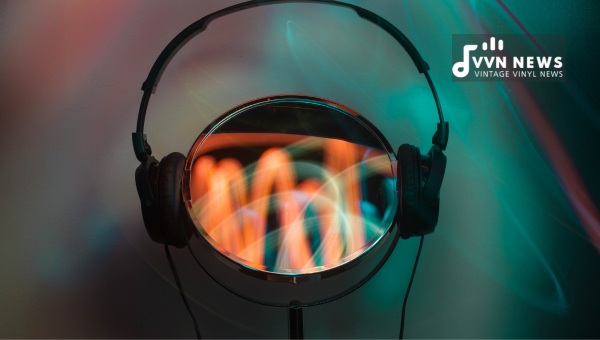
Unquestionably, dubstep has etched an indelible slot within pop culture since its inception.
Emergent from the dark corners of London’s club scene, it has gradually become a global sensation influencing not just music but fashion, television, cinemas, and even the gaming industry.
As artists such as Skrillex and Benga gained popularity, their unique styles were imitated in apparel with neon colors and geometric patterns- a trend most visible at music festivals.
Television and Cinemas
Television wasn’t far behind either. Signature aesthetics like quick-cut editing that emulates dubstep’s rhythmic patterns became pervasive even advertisements fell under its spell.
Cinema too embraced this sub-genre; the resounding bass drops and frenetic rhythms providing an excellent backdrop for action scenes.
Gaming Industry
Arguably, one of the industries where dubstep’s influence is most felt is within video games.
Soundtracks for notable games like ‘Call of Duty’ and ‘Far Cry 3’ have been enriched with hard-hitting dubstep tracks that considerably elevate the gaming experience.
Overall, dubstep’s indented foothold in pop culture represents its inherent power to be more than just a genre; it’s become an essential aspect of how we interpret and experience various forms of media today.
Critiques and Praise for Dubstep
As with every genre of music, Dubstep has its fair share of critics and admirers.
Detractors often comment on its aggressive bass lines and seemingly chaotic structure, labeling it as “noise” rather than music. They assert that there’s a lack of melody or harmony that separates most other types of music.
On the other hand, supporters celebrate Dubstep for these same qualities. Advocates revel in the creative freedom the genre upholds, being unafraid to push boundaries and step outside traditional musical paradigms.
The heavy emphasis on bass provides a visceral listening experience felt in one’s core; a raw musical form where the rhythm takes centerstage.
No matter one’s stance, there’s no denying that Dubstep has made an indelible mark on modern electronic music and continues to evolve, challenge conventions, and command a passionate fanbase around the world.
The Future of Dubstep
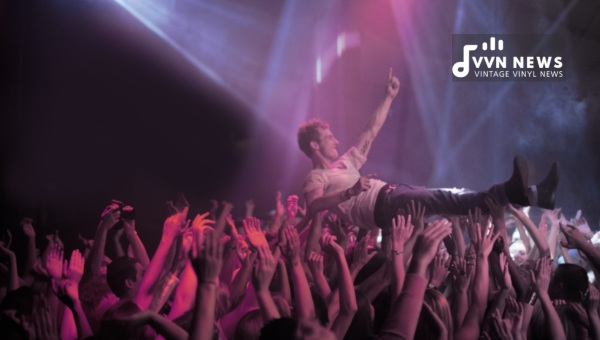
Looking into the future of Dubstep may seem complex; thanks to its mutable nature and openness to incorporate myriad sounds. It is clear that as long as there are people pushing the limits of electronic soundscapes, Dubstep will keep evolving.
The future will necessarily bring more integration – meshing of different types of music, leading to a continuing expansion in the genre’s diversity.
Equipped with technologically advanced equipment like haptic frequency devices, the door has certainly swung open for a more intense sensory experience in live concerts.
Lastly, emerging independent platforms like Soundcloud and Bandcamp will elevate bedroom producers giving rise to new ideas and innovations steering Dubstep onto unprecedented paths.
Also Read: Most-Streamed Artists Of All Time On Spotify [Music Mega Stars]
FAQs About Dubstep
What does ‘Dubstep’ essentially mean?
Dubstep is a musical genre that emerged in South London in the late 90s. Known for its heavy and complex bass lines and futuristic beats, it’s a type of electronic dance music.
What are the key characteristics of Dubstep?
Key elements usually include a thick, rumbling bass line with an oscillating pattern, trimmed back beats, ‘wobble’ effects, and interspersed breaks in rhythm.
Can you explain the term ‘wobble’ in Dubstep?
A ‘wobble’ is a type of sound or technique used often in Dubstep where the pitch of the bass fluctuates at a low-frequency rate creating a pulsing effect.
Who are some known figures in the Dubstep music scene?
Artists like Skrillex, Zeds Dead, Rusko & Borgore are prominent figures who have made significant contribution to the global expansion and recognition of Dubstep.
Is Brostep different from regular Dubstep?
Yes. Brostep is known for its aggressive tone and heavier emphasis on high-energy beats as opposed to traditional British dubstep which leans more towards minimal, sub-bass focused compositions.
Conclusion
In essence, the wide-eyed exploration into sub-genres of Dubstep has revealed a thriving ecosystem within the electronic music genre.
Whether your preference is the slow, bass-heavy rhythms of Ganjastep or the high-energy beats of Drumstep, it’s clear that there is a Dubstep sub-genre for every musical palate.
As with all great art movements, its evolution continues to shatter any preconceived limitations whilst inspiring a new generation of listeners and creators alike.
Don’t be afraid to delve deeper into this captivating world and uncover the magnanimous dynamism of Dubstep music



